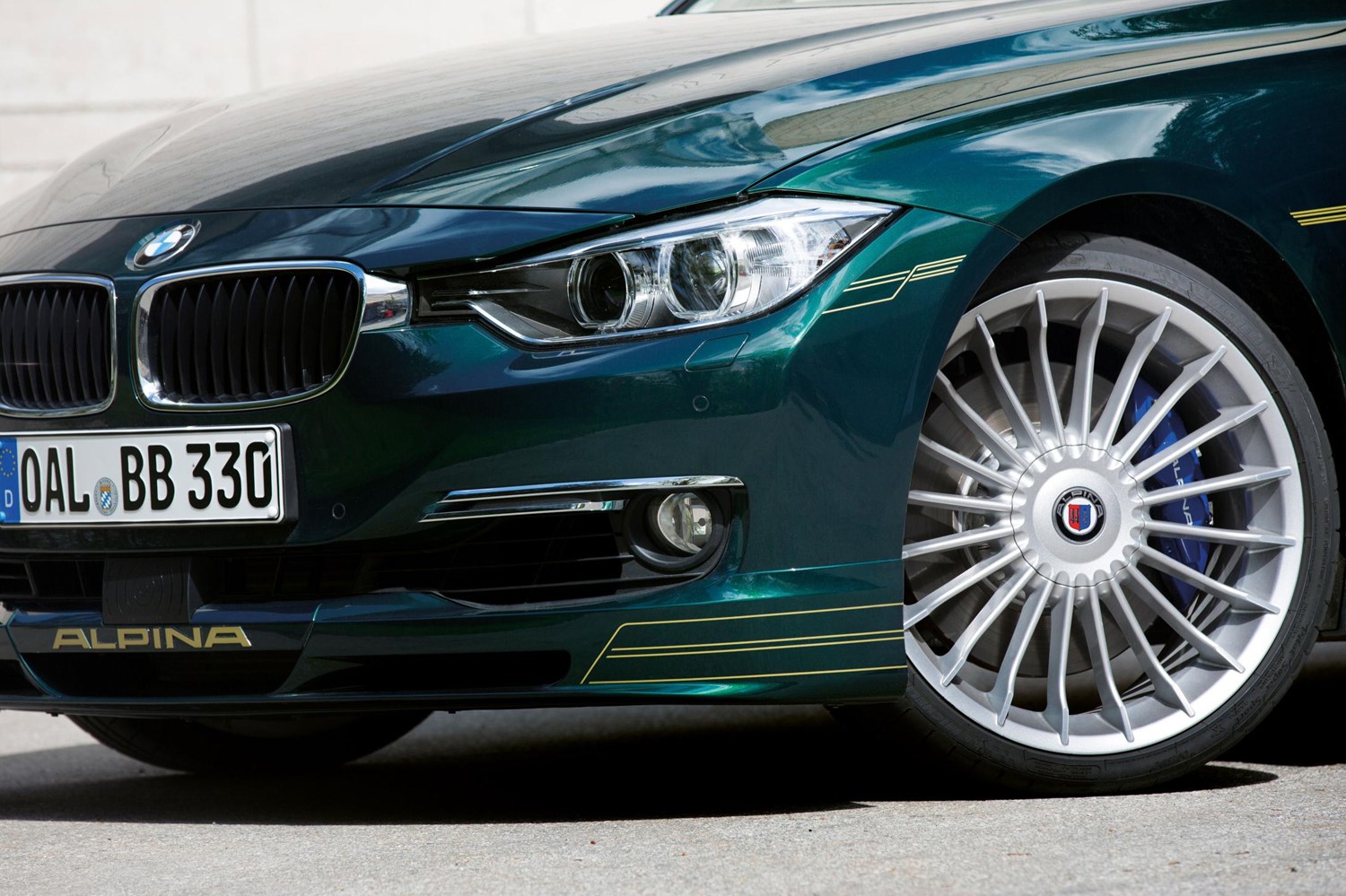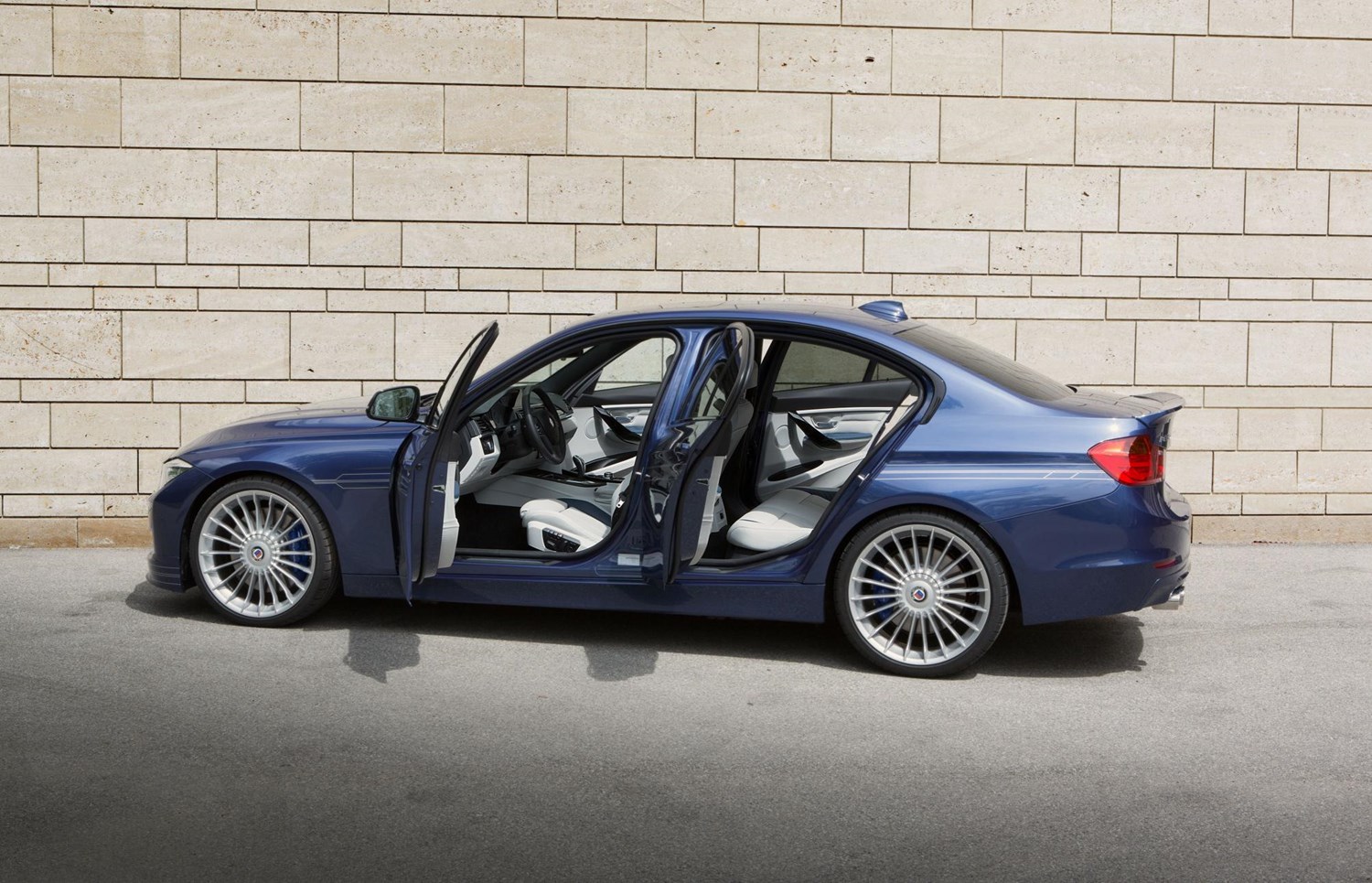Latest model
The latest D3 Bi-Turbo, based on the current F30 3 Series, is a noticeable step up from the previous models. 345bhp is now on tap, which of course means the phenomenal torque figure has also increased. It now produces an extraordinary 700Nm, which plays its part in a 0-60mph time of 4.6 seconds and a top speed of 173mph.
The wizards at Alpina have always had a way of retaining BMW’s originally intended ‘Sheer Driving Pleasure’, while adding luxurious elements and, in the Comfort option of the dynamic drive system, a more comfortable ride than its factory cousin, the M3, and most of the standard 3 Series range to boot.
This is a particularly surprising result, as the springs are 40 per cent stiffer in the D3. The anti roll bars, bump stops and bushes are all bespoke to the D3 too, creating a more dynamic driving experience than the standard 3 Series.
All of the creature comforts of a well-specced 3 Series are present and correct in the D3, including LED Headlights, adaptive cruise control, automatic lights and wipers, leather upholstery, USB connectivity, Bluetooth, DAB Radio, BMW’s iDrive infotainment system, Sat Nav and heated, electronically-adjustable front seats as standard.
Value for money
The real selling point for the D3 is its value; the Saloon version will set you back £48,000, which is very impressive for a car so fast and refined. A top range 3 Series will set you back upwards of £40,000, so sub-£50k for the level of driving joy provided by the D3 is not a raw deal at all.
While BMW’s M3 would have some trouble keeping the Alpina behind it on a track, it would have no chance at beating it in an economy run. The D3 claims a real-world figure of 53.3mpg, which is an incredible achievement for a car capable of such performance. Fortunately, there is very little to suggest that this figure is wildly optimistic; Evo Magazine achieved 36mpg when they tested the car, though they admitted to some ‘extremely hard’ driving in the process.
While there are some issues that may make you consider the M3 over the Alpina – we’ll get into them later – it’s very difficult to justify spending almost £8,000 more for a base model M3 from the drivers seat of the D3.
Admittedly, you can spend several thousand pounds adding options from the BMW 3 Series list of extra toys, but the car is more than specced enough for the job as standard.


